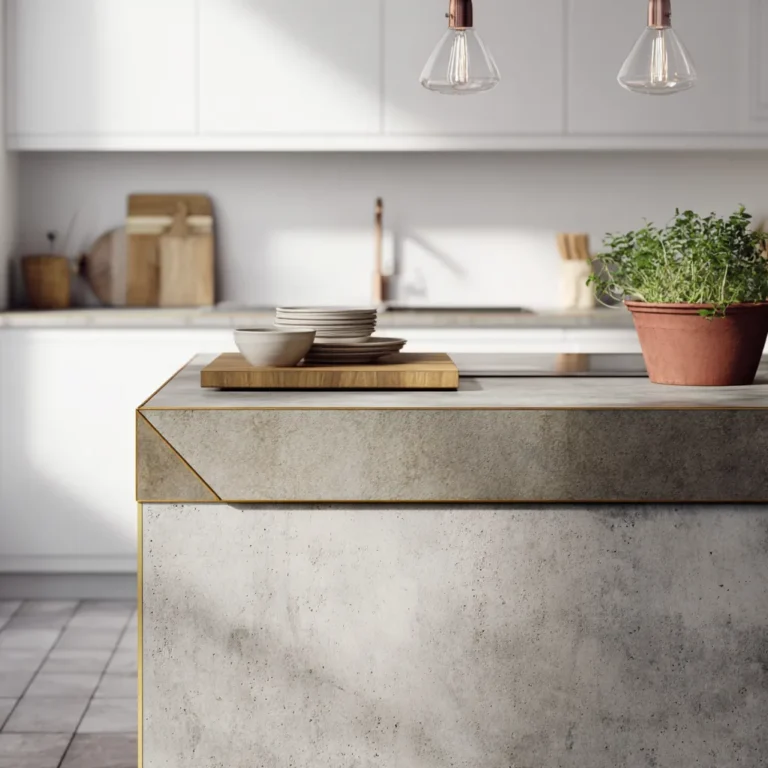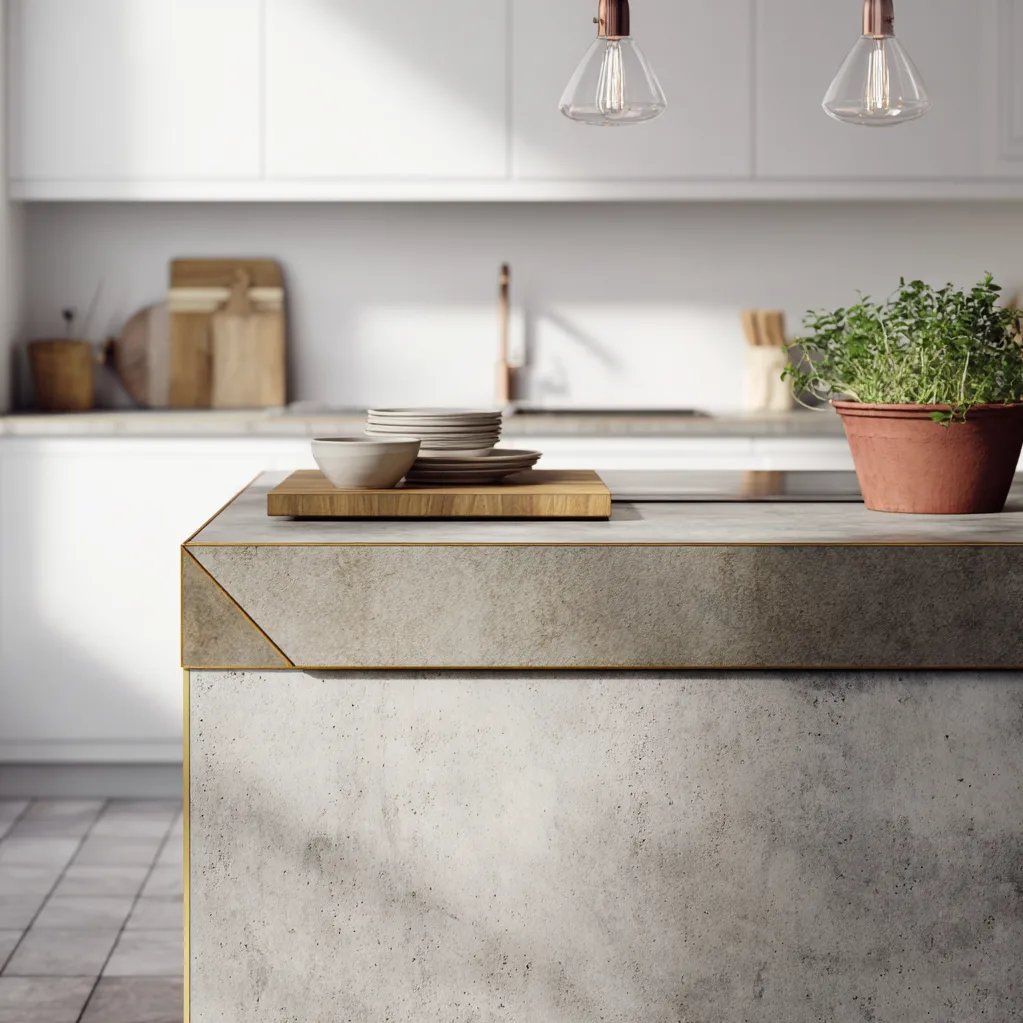
Concrete countertops have surged in popularity for their industrial charm and durability, but what truly sets them apart are the endless customization possibilities through inlays. Incorporating creative concrete countertop inlay ideas can elevate your kitchen from functional to phenomenal, adding personality and value to your home. Whether you’re renovating on a budget or aiming for a high-end look, inlays offer a unique way to express your style. From subtle geometric patterns to bold artistic statements, the right inlay can transform a plain surface into a conversation piece. This versatility makes concrete an ideal material for homeowners seeking both aesthetics and practicality. In this article, we’ll explore inspiring ideas that blend form and function, helping you design a space that reflects your taste. By the end, you’ll understand how inlays can turn an ordinary countertop into the centerpiece of your kitchen. Let’s dive into the world of creative possibilities and discover how to make your concrete surfaces truly stand out. For more tips on durable materials, check out this guide from Better Homes & Gardens.
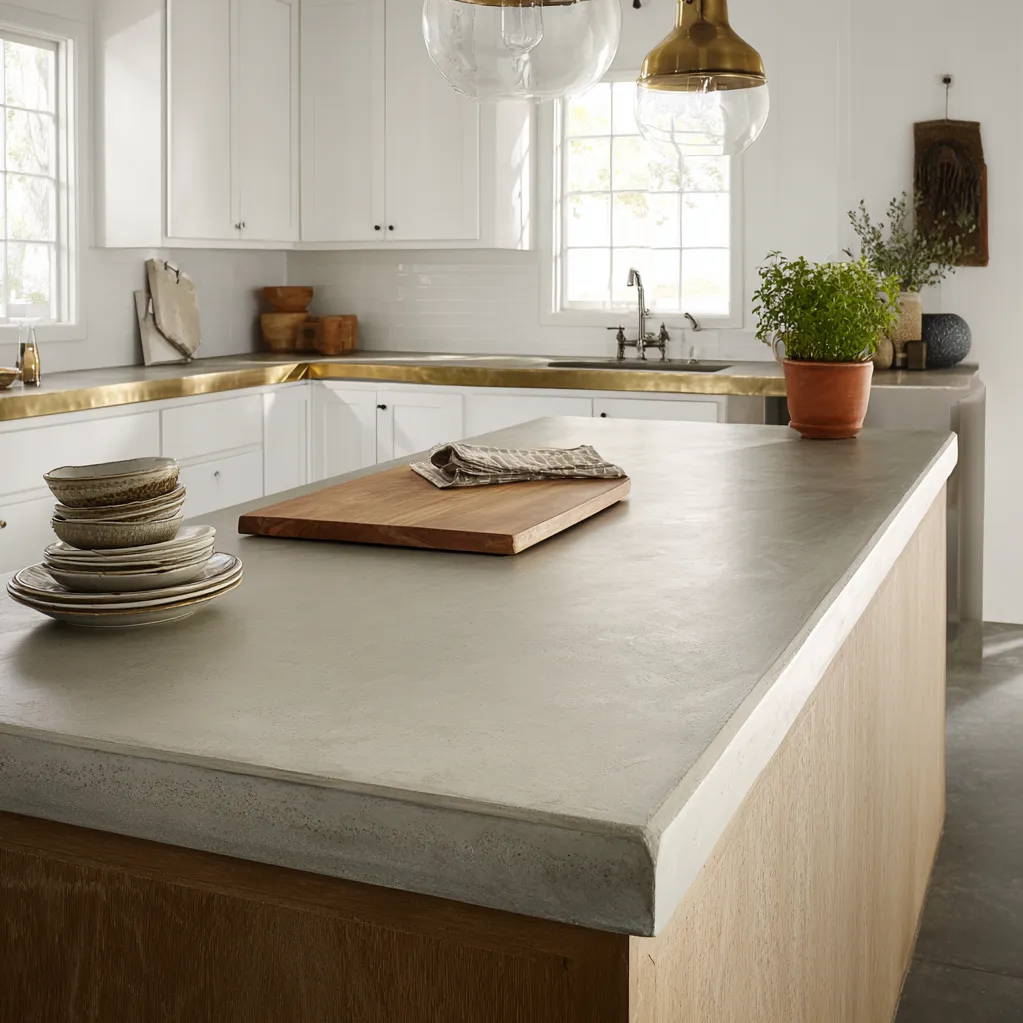
Stunning Concrete Countertop Inlay Ideas for a Modern Look
Modern kitchens often embrace clean lines and minimalist aesthetics, making concrete countertop inlay ideas a perfect fit for achieving that sleek, contemporary vibe. One popular approach is embedding metallic elements, such as brass or stainless steel strips, into the concrete surface. These inlays create subtle contrasts that catch the light, adding depth without overwhelming the space. For instance, thin lines of brass running parallel to the counter's edge can define the area while maintaining an uncluttered feel. Another modern idea involves using glass or resin inlays in geometric patterns, like hexagons or triangles, which introduce texture and visual interest. These materials are not only durable but also easy to clean, making them practical for busy kitchens. When planning such designs, consider the overall color scheme; a gray concrete base pairs well with silver or black inlays for a monochromatic theme, while warmer tones like copper can soften the industrial look. Additionally, integrating LED lighting into inlays can transform your countertop into a functional art piece, illuminating work areas with a soft glow. For DIY enthusiasts, start with simple templates to ensure precision, and always seal the concrete properly to protect against stains. By blending materials thoughtfully, you can create a modern kitchen that feels both inviting and innovative, proving that concrete countertop inlay ideas are key to personalized, high-style spaces.
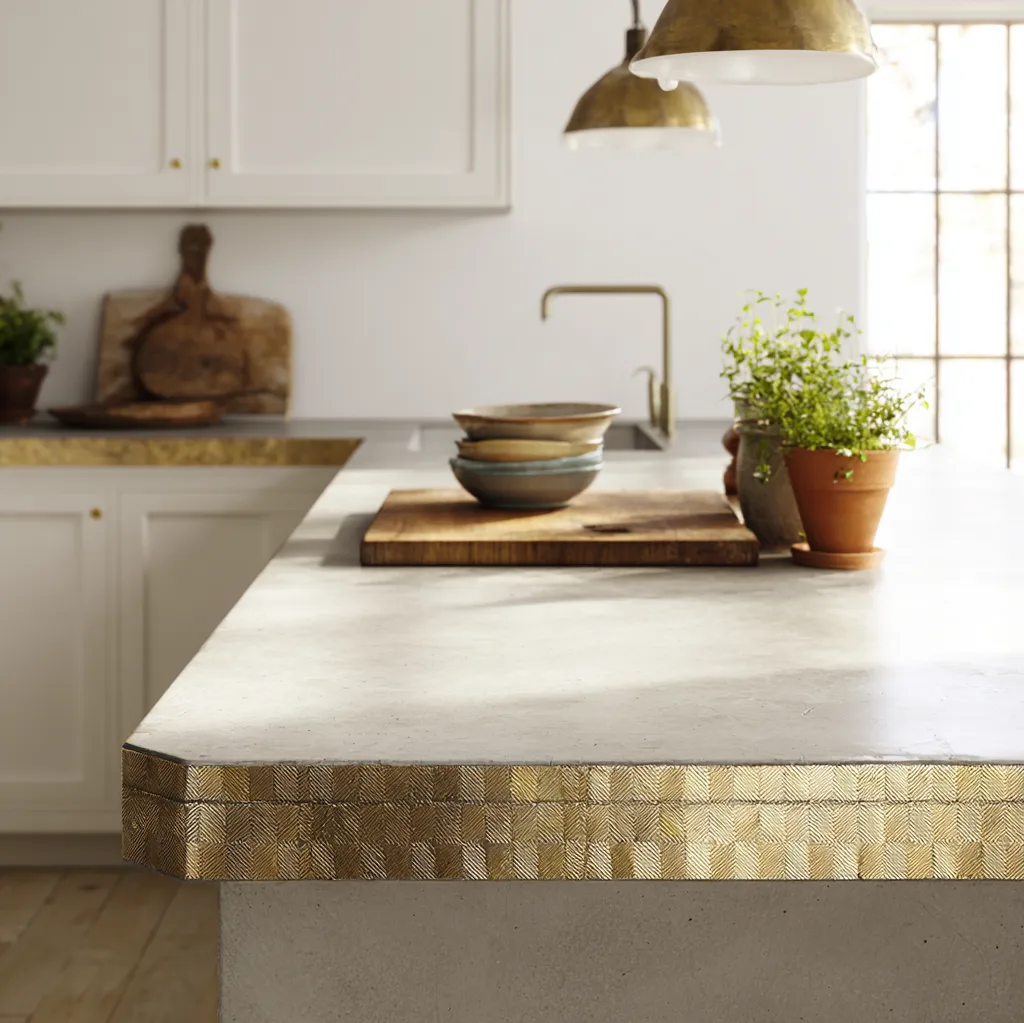
Budget-Friendly Concrete Countertop Inlay Ideas for DIY Enthusiasts
Creating beautiful concrete countertop inlay ideas doesn't have to break the bank, especially if you're willing to roll up your sleeves for a DIY project. One cost-effective option is using recycled materials, such as broken tiles or sea glass, which can be embedded into the concrete for a colorful, eclectic look. These items are often inexpensive or free, and they add a unique, handmade touch to your kitchen. For example, arrange mosaic pieces in a random pattern or a specific design, like a floral motif, to infuse personality without high costs. Another affordable idea is to incorporate natural elements, such as pebbles or wood slices, which are readily available and easy to work with. Simply press them into the wet concrete before it sets, ensuring they're flush with the surface to avoid snagging. To keep expenses low, focus on small inlays rather than covering the entire countertop; a border of inlaid stones or a central medallion can make a big impact with minimal materials. When tackling this yourself, use a pre-mixed concrete blend for consistency and invest in a good sealer to protect your work from moisture and wear. For step-by-step guidance, visit our DIY and Budget-Friendly Decor section on https://wheelsoflavor.com/diy-concrete-tips. Remember, patience is key—allow ample drying time to prevent cracks. With these budget-friendly strategies, you can achieve a custom look that rivals high-end designs, proving that creativity often outweighs cost in concrete countertop inlay ideas.
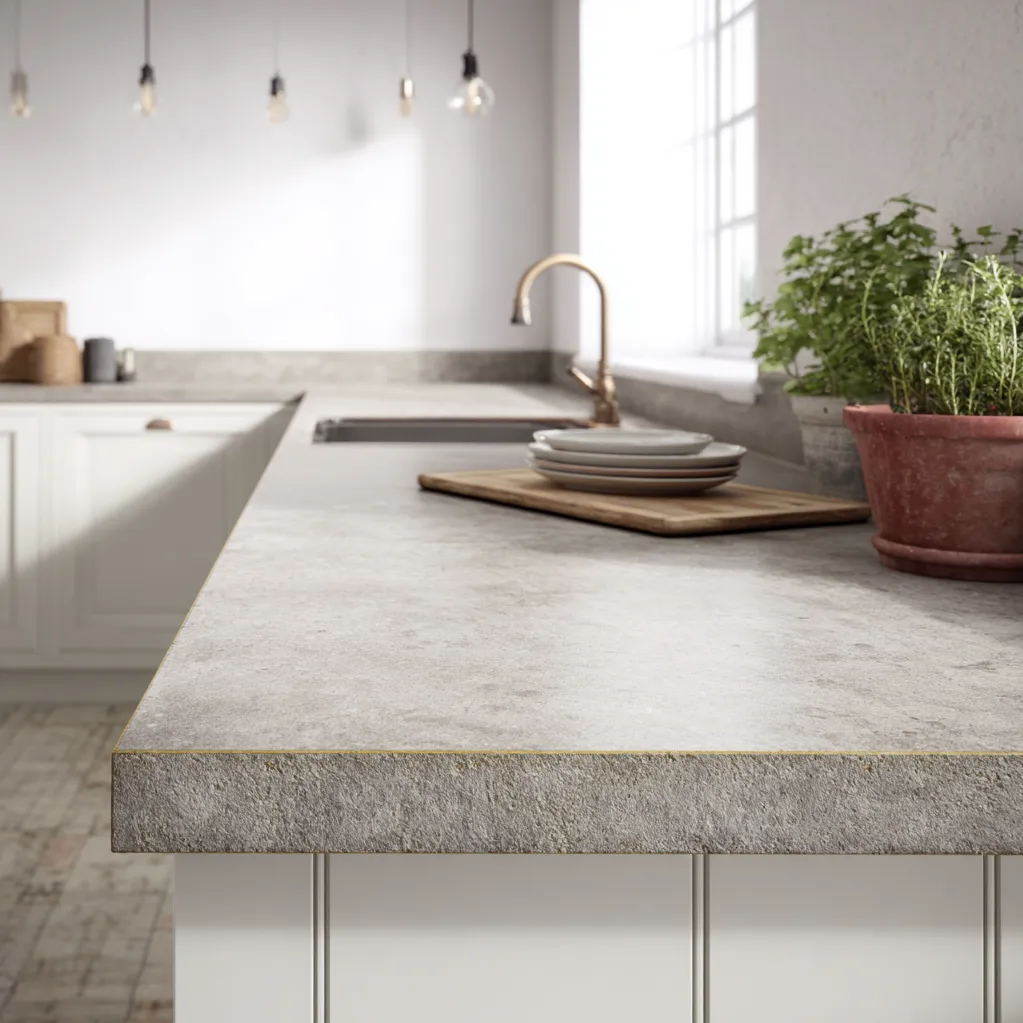
Durable and Practical Concrete Countertop Inlay Ideas for High-Traffic Areas
In high-traffic kitchens, durability is paramount, and concrete countertop inlay ideas can be tailored to withstand daily wear while adding aesthetic appeal. One robust option is using epoxy resin inlays, which bond strongly with concrete and resist scratches, heat, and chemicals. For instance, embedding resin inlays with colored pigments or embedded objects like coins or shells creates a durable, sealed surface that's easy to wipe clean. Another practical idea involves metal inlays, such as aluminum or powder-coated steel, which are hard-wearing and less prone to damage than softer materials. These can be arranged in functional patterns, like a built-in trivet area near the stove, where hot pots can be placed without fear of burns or stains. When designing for durability, consider the inlay's thickness and edges; flush installations prevent food traps and make cleaning effortless. It's also wise to choose materials with similar expansion rates to concrete to avoid cracking over time. For example, stone inlays like granite or quartz pieces can match concrete's resilience and add a luxurious touch. Always apply a food-safe sealer after installation to protect against spills and bacteria. By prioritizing materials that combine strength with style, these concrete countertop inlay ideas ensure your kitchen remains both beautiful and functional for years, even in the busiest households.
Conclusion
In summary, concrete countertop inlay ideas offer a versatile and creative way to personalize your kitchen, blending aesthetics with practicality. From modern metallic accents to budget-friendly DIY projects and durable solutions for high-use areas, inlays can transform a simple countertop into a standout feature that reflects your unique style. As we've explored, these designs not only enhance visual appeal but also add functional benefits, such as improved durability and easier maintenance. Looking ahead, the trend toward sustainable and smart home integrations suggests that future inlays might incorporate eco-friendly materials or embedded technology, like touch-sensitive controls. To get started, assess your space, budget, and skills—whether you hire a professional or tackle it yourself, the key is to plan carefully and prioritize quality materials. Remember, a well-executed inlay can increase your home's value and make everyday cooking more enjoyable. For more inspiration on kitchen upgrades, dive into our Room Specific Decor resources. Embrace these ideas to create a kitchen that's not just a place to cook, but a true expression of your personality and lifestyle.
Frequently Asked Questions
Q: What materials work best for concrete countertop inlays?
The best materials for concrete countertop inlays depend on your desired look and durability needs. Metals like brass, stainless steel, or aluminum are popular for their sleek appearance and resistance to wear, making them ideal for modern kitchens. Natural elements such as wood, stone, or glass add texture and are often budget-friendly, but they may require sealing to prevent damage. Epoxy resin is another excellent choice, as it bonds well with concrete and can be customized with colors or embedded objects, offering both creativity and practicality. Always ensure the material is compatible with concrete's properties to avoid issues like cracking or staining over time.
Q: How do I maintain concrete countertops with inlays?
Maintaining concrete countertops with inlays involves regular cleaning and periodic sealing to protect the surface. Use a mild, pH-neutral soap and warm water for daily wiping, avoiding harsh chemicals that could damage the inlays or concrete. For stains, a soft cloth and gentle cleaner usually suffice. Reseal the countertop every 1-2 years, or as recommended by the manufacturer, to guard against moisture and scratches—this is especially important for porous inlays like wood or stone. If inlays become loose or damaged, consult a professional for repairs to ensure longevity. Proper care will keep your countertop looking pristine and functional for years.
Q: Can I add inlays to an existing concrete countertop?
Yes, you can add inlays to an existing concrete countertop, but it requires careful preparation to ensure a seamless result. Start by cleaning and lightly sanding the surface to create a rough texture for better adhesion. Then, cut grooves or recesses into the concrete using a router or grinder, matching the shape and depth of your inlay material. Insert the inlay—such as metal strips or resin—using a strong adhesive like epoxy, and press it firmly to eliminate air bubbles. Once set, grind and polish the area to blend it with the surrounding surface, and apply a fresh sealer to protect the entire countertop. This process can be DIY-friendly for small inlays, but for larger or complex designs, hiring a professional is advisable to avoid damage.

